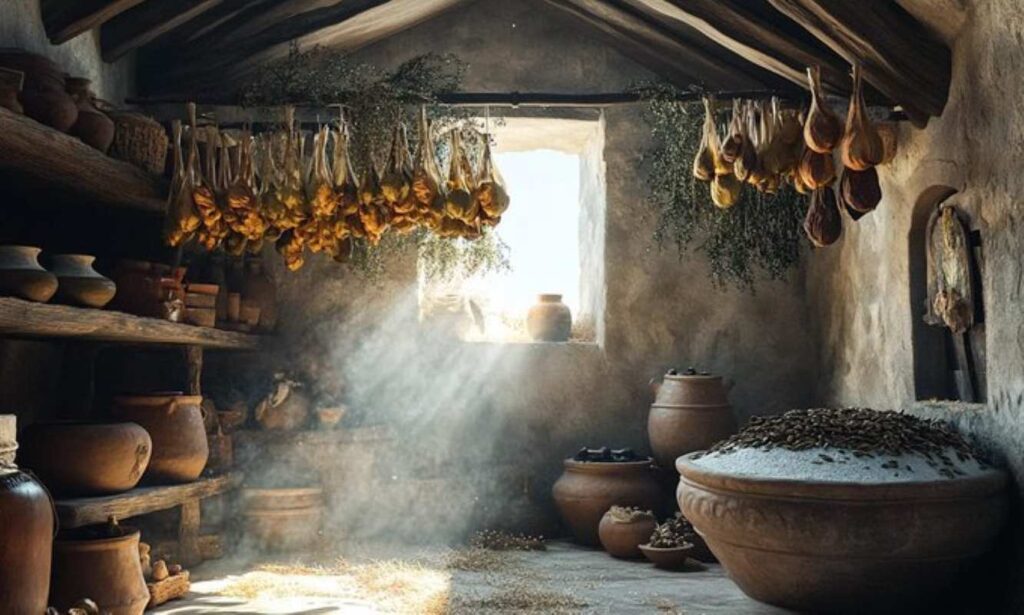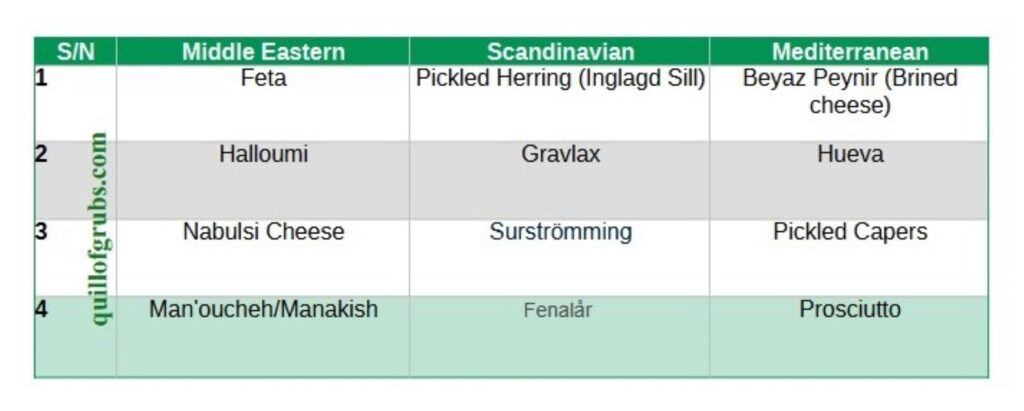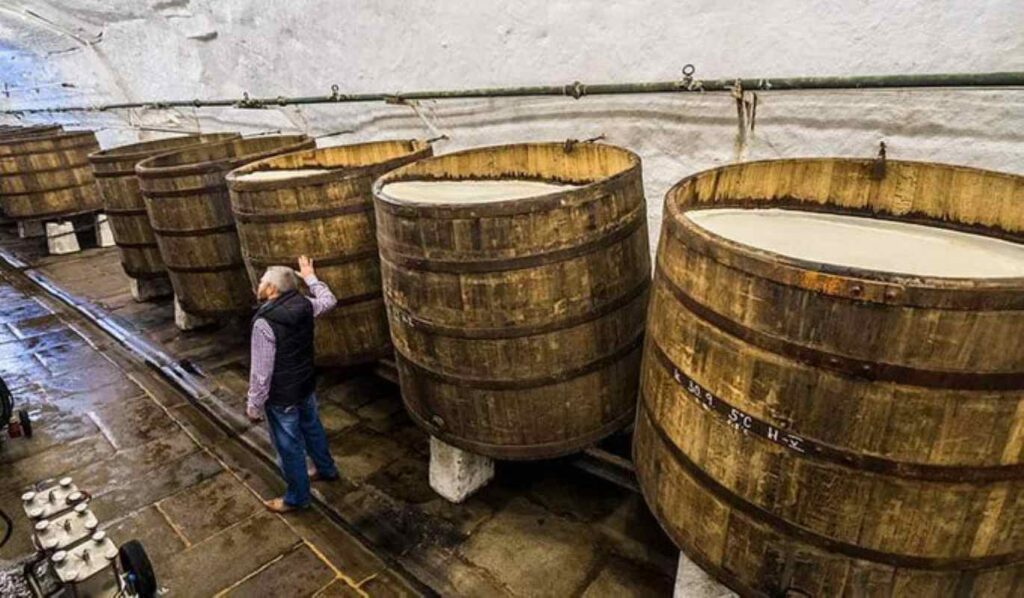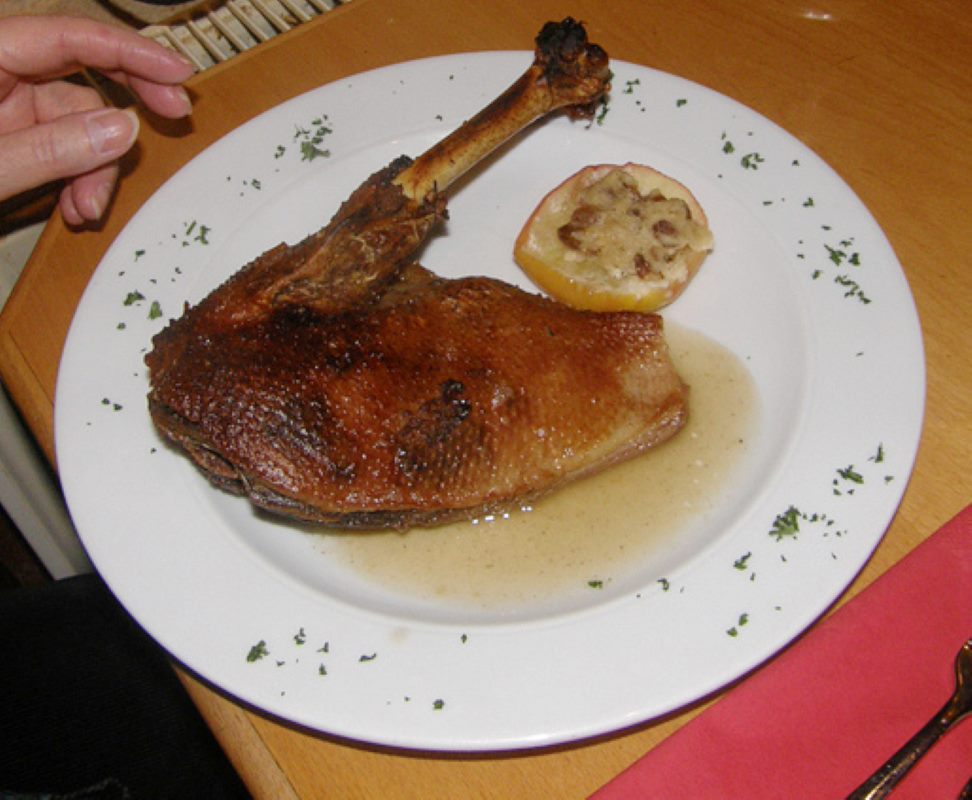A historical review of traditional food preservation methods reveals that humans managed to maintain food longevity before the harnessing of electricity and the invention of refrigeration. Nowadays, we seldom give afterthoughts to the sophisticated preservation methods available to us. Only a few centuries ago, human civilizations were not as technologically sophisticated, yet they managed to keep food wholesome for extended periods.
Ancient food storage techniques were not just survival strategies for people during the pre-industrial era. Indeed, some of these preservation methods were cultural cornerstones for pockets of human society. Some of these pre-refrigeration food storage techniques influenced the diet and culinary preferences of many cultures.
In this article, we shall explore some traditional preservation methods that are still relevant well into the industrial age. The second-to-the-last traditional preservation method will blow you away.
Drying and Smoking: Ancient and Global
Drying and smoking are some of the oldest global food traditions known to humans. Dehydration was one of the earliest traditional food preservation methods, dating as far back as the Palaeolithic age. Besides reducing the volume of moisture in food materials, smoking also joins the ranks of heritage cooking techniques, adding a peculiar flavor to foods.

It is an incontestable fact that before the industrial age, pockets of human civilization were drying and smoking food. The sun is an abundant energy source in Africa, Asia and the Americas. So, in such regions, it was commonplace to leave fruits, meats and fish in the sun to dry.
While crude methods of drying and smoking are still in use today, human ingenuity has created multiple sophisticated variants of these cultural food storage methods. Examples are freeze-drying and puff-drying.
ALSO READ: The Science of Fermentation: How Bacteria Make Foods Better
Salting and Brining
People, in ancient times, must have noticed that traditional preservation recipes containing a lavish amount of salt keep food from going bad easily. So, even without having in-depth knowledge of how these ancient culinary practices kept food wholesome, they made the most of it. The table that follows is a list of some cultural foods that are products of salting or brining preservation techniques.

Salting and brining are traditional preservation techniques for improving the longevity of stored food by reducing water activity. Water activity is a measure of the water proportion in food materials available for use by spoilage microorganisms. When water activity is low, spoilage microorganisms struggle to thrive. So, salting involves directly introducing dry salt to food, while brining entails submerging food in a saltwater solution.

In the Middle Eastern, Scandinavian and Mediterranean regions, people used salt in traditional preservation recipes before the advent of refrigeration. In regions, you’ll find cultural dishes that were first traditional food preservation methods before becoming local delicacies.
Fermentation: Preservation Meets Nutrition
Cultures around the globe have at least one fermented food to their credit. There’s kimchi from Korea, German sauerkraut, Ethiopian injera, kefir from Russia, Japanese miso, and garri from Nigeria. Cheese, bread, beer and wine are prolific and global examples of fermented foods.
When we dig deep into the history of these fermented foods, we’ll find they originated from ingenious initiatives to preserve highly perishable food materials. Indeed, point out any highly perishable food material, and the pre-industrial man probably used cultural preservation techniques like fermentation to keep it for longer. Fermentation was partly prolific because it sometimes begins spontaneously and often requires minimal tools, just controlled environments.

The science of fermentation involves several complex biological processes. However, the ancient and self-taught folks who first fermented grapes into wine made the most of barrels and cellars with controlled temperatures. Ditto sourdough, and other fermented products with medieval origins.
Among all the traditional food preservation methods covered in this piece, fermentation is enjoying a renaissance thanks to recent discoveries of its potential health benefits. For example, many studies now tout fermentation as inducing probiotics production in foods. Meanwhile, studies have established that probiotics in food improve gut health considerably.
Underground Storage and Cold Cellars
Who said there were no refrigeration systems before the industrial age? Food preservation before refrigeration may have been crude, but it was good enough for the needs of that period. Indigenous food technologies like underground storage held the food security fort in ancient times before the invention of electric temperature-control technologies.
As far back as the 17th century, European and North American civilizations had root cellars. These are structures with insulation, built into the ground, designed to keep perishable foods fresh and available through the winter.

Just as root cellars are one of the prominent cultural food storage methods in medieval global North, clay pots were popular in Asia, Africa and the Middle East. Just as refrigerators of today come in different sizes, these ancient clay pots came in various sizes. The clay pots were usually buried in sand or ash. The chief goal of the ancient clay pot was to serve as a natural regulator of humidity and temperature. Imagine not having to worry about the power consumption of the two refrigerators in your kitchen and the freezer in the basement, thanks to indigenous and traditional food preservation methods.
Oil and Fat-Based Preservation
Some other prehistoric and traditional food preservation methods involve the use of fats. Some heritage cooking techniques make long-term storage of dishes like French confit possible. Confit is duck meat that is cooked and preserved in the bird’s fat.
In Africa, oil in the spiced coating mixture of suya also contributes to its short-term storage. While oil is not the major preservative in suya, it plays a marked role in making the meat shelf-stable pending the period of its consumption.

Olive oil was used in preserving and storing herbs and spices in medieval times. That probably gave rise to the practice of apothecaries making ointments by mixing oils with odoriferous ingredients.
It’s possible the ancients were not aware of the mechanism of oil preservation. When food is submerged in oil or caked up in fat, the fatty substance creates a barrier between the food and oxygen or airborne spoilage microorganisms.
Russians Preserved Fresh Milk With Live Frogs
During our research for this piece, we stumbled upon more than one study affirming that medieval Russians preserved their fresh milk by dropping live frogs into them. At the time, even the Russians could not explain this phenomenon. However, they noticed that this practice helped their fresh milk keep for a bit longer.

In 2012, a team of Russian scientists solved the puzzle. In an unravelling study, they found that the Russian brown frog (Rana temporaria) secretes antimicrobial peptides. So, what happened was that Russians dropped these brown frogs in containers of fresh milk, and the creatures secreted natural antibiotics into the milk. Thanks to the advent of refrigerators, it would be unnecessary for you to drop brown frogs into your fresh milk.
ALSO READ: How Globalization is Shaping Modern Cuisine: Fusion, Innovation, and Cultural Exchange
Ash, Clay, and Natural Wrappers
Similar to oils, the goal of natural wrappers like clay, ash and leaves is to create a protective barrier around the food item to be stored. For example, Afghans store grapes in airtight clay for up to six months. Africans also use banana leaves to wrap fermented locust beans before storing it for long periods in a calabash. In parts of the world, variants of dry cheese were also preserved by coating them with ash.

Many of these medieval hacks were originally preservative. However, some have evolved into ancient culinary practices as they sometimes leave flavor deposits or confer some other desirable sensory attributes on the preserved food.
An example of the influence of ancient food preservation methods across cultures is found with stock fish. Stock fish preservation involves drying fresh fish in the Nordic cold. However, that traditional method of preserving fish has triggered a long list of cuisines and, alongside, a culinary identity among the Igbo people of Nigeria. So, several traditional methods of food preservation have been retained, or are being revived. Why? Many of the indigenous preservation methods have a flavor signature or cultural nostalgia that modern preservation methods struggle to match up to.
From sun to salt, humanity’s creativity in keeping food fresh has fed generations—literally and culturally.











